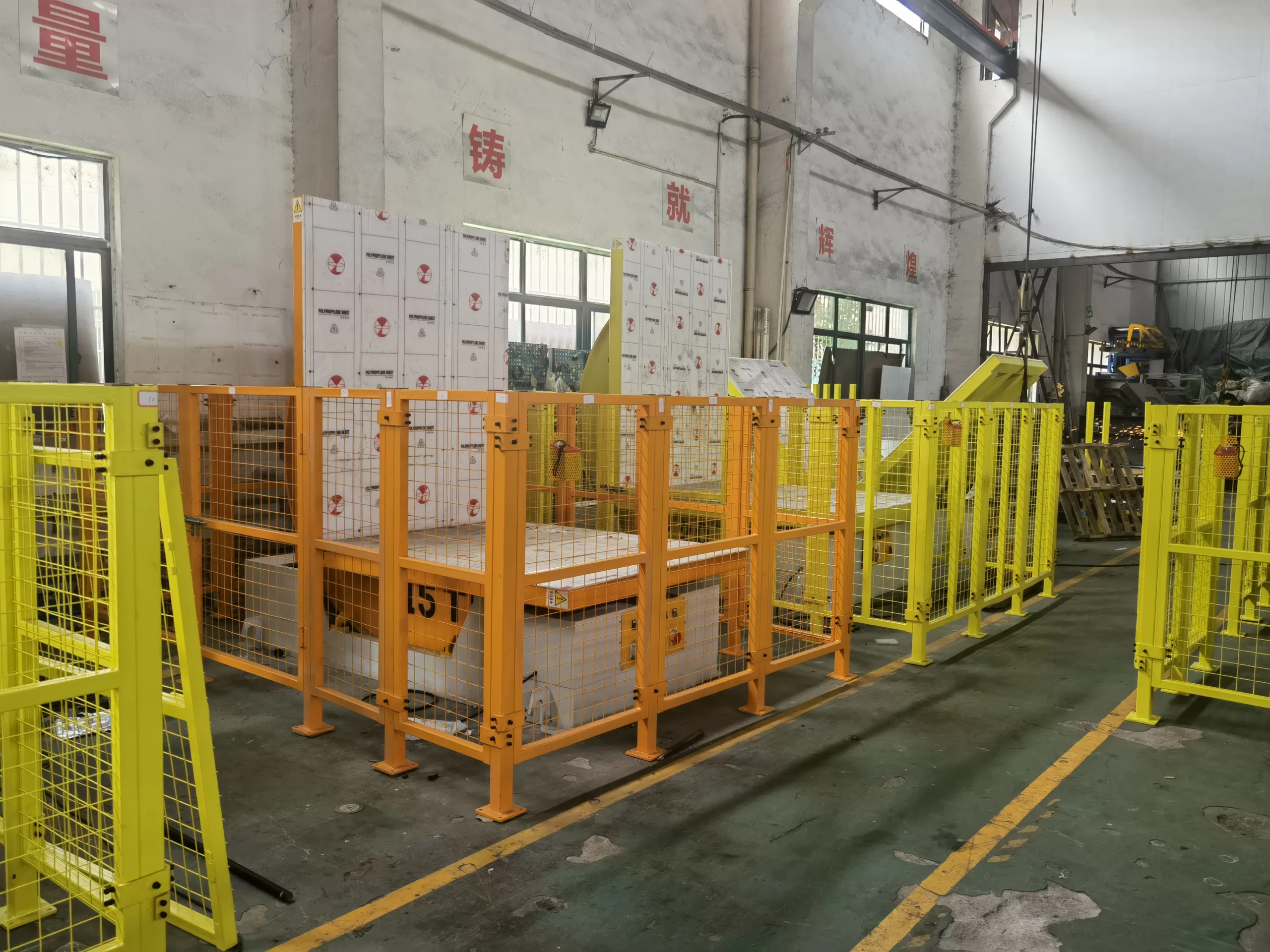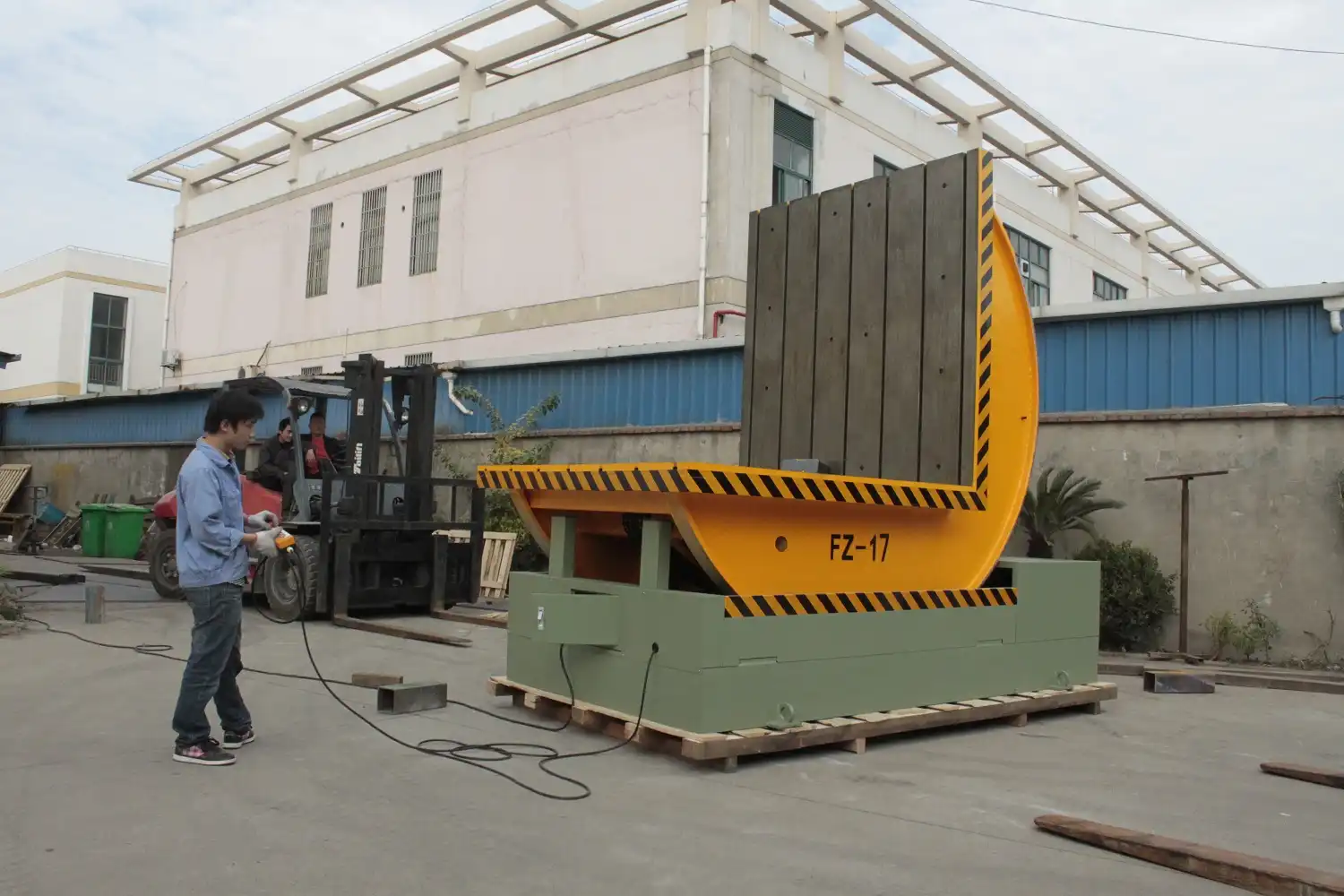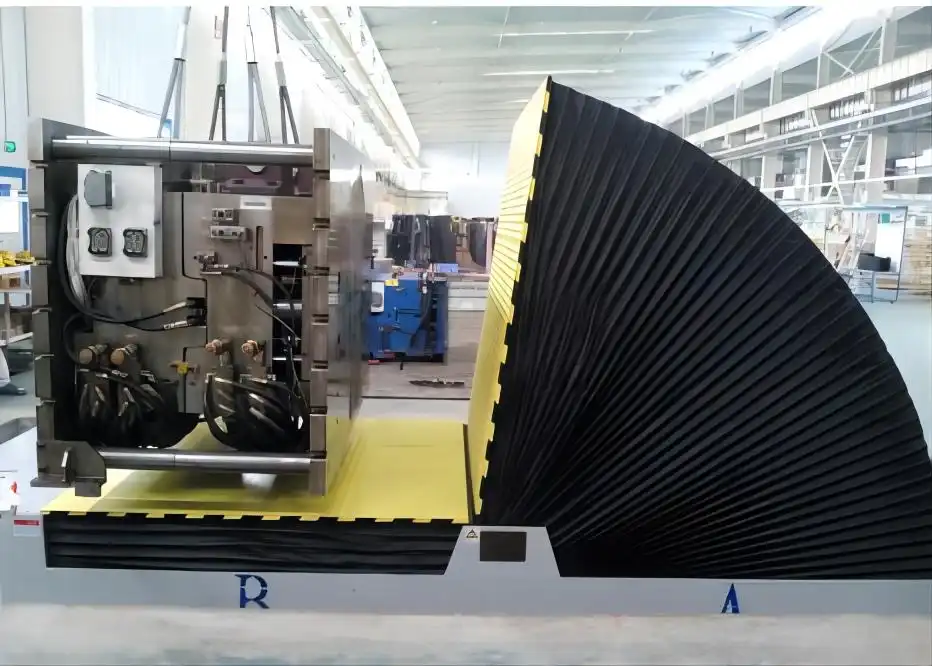Looking to Cut Downtime? Here’s How Argentine Plants Are Flipping Molds Safer and Faster
Are your production targets constantly threatened by maintenance downtime? I see it all the time. A critical piece of equipment like the continuous caster mold needs changing, and the entire production line grinds to a halt. The traditional method, using an overhead crane and chains, is not only slow but incredibly dangerous. Every time a multi-ton mold swings through the air, you are risking catastrophic equipment damage and, more importantly, the safety of your crew. This reliance on outdated processes creates a bottleneck that directly eats into your profits and puts your people in harm's way. What if there was a way to make this essential task predictable, safe, and dramatically faster?
Argentine steel plants are cutting significant downtime and boosting safety by replacing their traditional, crane-dependent mold flipping methods with dedicated mechanical mold flippers. These machines secure the mold onto a stable platform and perform a controlled 90 or 180-degree rotation. This simple change eliminates the high-risk, time-consuming process of manual rigging and crane operation, turning a hazardous, hours-long task into a safe, minutes-long procedure.

For a CEO or plant owner like Javier Morales in Mexico, who is deeply focused on ROI and operational efficiency, this isn't just a minor upgrade. It's a strategic investment. When you're managing a 2-million-ton-per-year plant, every minute of uptime counts. Challenges like aging equipment and the need to reduce costs are universal in our industry, from Argentina to Mexico. I started SHJLPACK to share the knowledge I gained building my own packing machine factory, and this is one of those insights that can make a real, measurable difference. Let’s dive deeper into how this solution works and why it’s becoming a standard for forward-thinking steel plants.
What is the traditional mold flipping process and why is it so risky?
You know the scene well. A maintenance call comes in for a mold change. The overhead crane, a workhorse of the plant, is called into action. Your team, skilled but exposed, begins the slow, careful dance of attaching heavy chains or slings to the mold. It's a process that has been done the same way for decades, but familiarity doesn't erase the danger. What if a worn-out chain link finally gives way? What if a moment of miscommunication leads to a sudden shift in the load? These aren't just hypotheticals; they are real risks that keep plant managers awake at night.
The traditional mold flipping process uses an overhead crane with slings or chains to lift and manually rotate a heavy mold. This method is incredibly risky because it relies on the stability of the rigging and the skill of the operators to control a potentially unstable, suspended load. The primary dangers include dropped loads, uncontrolled swinging, and severe pinch-point injuries, which can lead to fatalities, equipment damage, and extended plant shutdowns.

A Deeper Look at the Dangers
Let’s be honest about what this process truly entails. It's not just a simple lift. It’s a complex, multi-step procedure where a single error can have devastating consequences. My journey from an engineer on the factory floor to a business owner has shown me that the "way it's always been done" is often the most expensive and dangerous path.
The Manual Process Unpacked
- Preparation and Rigging: A team of two to three workers must first clear the area. They then have to manually attach heavy industrial chains or fabric slings to the mold. This step alone presents risks of sprains, strains, and hand injuries. Attaching the rigging correctly is a skill, and any mistake can unbalance the load.
- The Initial Lift: The crane operator slowly takes up the slack. Everyone holds their breath. This is a moment of high tension. The mold is lifted just a few inches off the ground to test the balance. If it's not perfectly centered, it must be lowered, and the rigging adjusted. This trial-and-error process wastes valuable time.
- The Flip: This is the most dangerous part. The crane lifts the mold higher, and workers, sometimes using long poles or guide ropes, attempt to manually coax it into turning. The mold can swing unpredictably. The kinetic energy in a multi-ton object is immense. A person caught between the swinging mold and a stationary object has no chance.
- Placement: After the flip, the mold must be carefully lowered into position. This requires precise coordination between the crane operator and the ground crew. A slight miscalculation can damage the mold, its support structure, or other nearby equipment.
The True Costs Go Beyond the Obvious
A pragmatic leader like Javier always performs a strict feasibility analysis. The problem with manual flipping is that many of the biggest costs are hidden.
| Cost Category | Direct Costs | Hidden / Indirect Costs |
|---|---|---|
| Labor | Wages for 2-3 maintenance workers + 1 crane operator. | Overtime pay if the process runs long. |
| Equipment | Crane operational cost (energy, wear and tear). | The overhead crane is tied up and cannot be used for other critical tasks, creating new bottlenecks. |
| Time | 1-2 hours of direct production downtime per flip. | The full stop-and-start cycle for the caster, which can extend downtime beyond the flip itself. |
| Safety | - | Cost of accidents (medical, legal, fines). Increased insurance premiums. Lost productivity due to accident investigations. Negative impact on worker morale and retention. |
For a plant with aging equipment, these risks are even greater. An older crane may have less precise controls, and its components are more susceptible to fatigue and failure. Relying on such a system for a delicate operation is a gamble you shouldn't have to take.
How does a mechanical mold flipper improve safety and efficiency?
You have an ambitious goal: boosting equipment uptime to 95%. This is impossible if your maintenance procedures themselves are a primary source of downtime. A slow, manual mold changeover is a planned production stop that easily spirals out of control, eating away at your efficiency targets. Now, imagine a different scenario. A single operator pushes a button. A heavy mold, securely clamped, rotates smoothly and precisely in under five minutes. The crane is free to perform other tasks. Your team is safe. This isn't a futuristic vision; it's what a mechanical mold flipper delivers today.
A mechanical mold flipper dramatically improves safety by completely eliminating manual handling and the use of overhead cranes for the turning operation. It secures the mold on a stable, grounded platform and uses a controlled, automated drive system for rotation. Efficiency skyrockets because the process time is reduced from over an hour to just a few minutes, and it requires only one operator instead of a full team.

Breaking Down the Transformation
When I first started my company, SHJLPACK, I focused on providing total solutions. I learned early on that the best solutions are often the ones that solve multiple problems at once. A mold flipper is a perfect example. It addresses safety, efficiency, and predictability in one elegant piece of engineering.
The Engineering of Safety and Speed
At its core, a mold flipper is a simple, robust machine designed for one purpose.
- Stable Base: The entire unit is anchored to the floor of the maintenance bay, providing a solid foundation that cannot tip or shift.
- Loading Table: The mold is placed onto a heavy-duty table or "cradle" by the overhead crane. This is the only time the crane is needed—for a simple, stable lift, not a risky turning maneuver.
- Clamping System: Once loaded, a hydraulic or mechanical clamping system secures the mold to the table. This ensures it is completely fixed and cannot move during rotation.
- Controlled Rotation: A powerful electric motor with a gearbox or a hydraulic system drives the rotation. The movement is smooth, steady, and predictable. It stops precisely at 90° or 180°, as needed. Safety features like automatic locking mechanisms and emergency stops are standard.
I remember visiting a client's plant in Argentina. The plant manager, a man with 30 years of experience, told me a story about a near-miss with a crane-flipped mold that almost took a worker's life. The incident shook the entire team. After they installed one of our mold flippers, he said their mold change downtime dropped by over 70%. But more importantly, he told me, "Vincent, I can finally sleep through the night during a maintenance shift."
A Clear Comparison: Old vs. New
For a data-driven leader, the numbers speak for themselves.
| Feature | Traditional Crane Flip | Mechanical Mold Flipper | Improvement |
|---|---|---|---|
| Time Required | 60 - 120 minutes | 3 - 5 minutes | >90% Reduction |
| Personnel Required | 3 - 4 (crew + crane operator) | 1 Operator | 75% Labor Reduction |
| Safety Risk | High (Dropped loads, swinging) | Extremely Low (Grounded, controlled) | Eliminates Primary Hazard |
| Crane Dependency | 100% of the operation | 10% (for loading/unloading only) | Frees up Crane by 90% |
| Process Consistency | Varies with crew skill | 100% Repeatable | Guaranteed Predictability |
This isn't just an incremental improvement. It is a fundamental transformation of a critical maintenance process, directly supporting goals like increased uptime and reduced operational costs.
What are the key considerations when choosing a mold flipper for a steel plant?
So, you see the value. You understand how a mold flipper can solve some of your most pressing challenges with downtime and safety. But as a business owner who scrutinizes every capital investment, you know that the next step is critical. Choosing the right machine is just as important as deciding to get one in the first place. Buying a flipper that is undersized, lacks essential features, or comes from an unreliable supplier can turn a great solution into a new problem. You need a partner, not just a vendor.
When choosing a mold flipper, the most important considerations are the technical specifications matched to your needs—specifically, load capacity, table size, and rotation angle (90° or 180°). Beyond the machine itself, you must evaluate the supplier's industry experience, their ability to provide installation and training support, and their long-term commitment to service and spare parts.

Making the Right Choice: A Practical Guide
Over the years, I've helped countless clients navigate this process. My mission with SHJLPACK is to share this knowledge freely, so you can make an empowered decision that delivers the ROI you expect. Let's break down the selection process into manageable parts.
Step 1: Define Your Technical Requirements
First, you must look at your own operations. Do not let a salesperson tell you what you need. You must know your own specifications.
- Load Capacity: This is non-negotiable. Calculate the weight of your heaviest mold, then add a safety margin of at least 20-25%. An undersized flipper is a safety hazard waiting to happen.
- Table Dimensions: Measure the footprint (length and width) of your largest mold. The flipper's table must be large enough to support the entire base of the mold securely.
- Center of Gravity: You must know the center of gravity of your mold. This is critical information for the flipper manufacturer to ensure the machine is balanced and stable during rotation.
- Rotation Angle:
- 90° Flipper: Ideal for maintenance and inspection tasks where you need to access the side or bottom of the mold. It's the most common and cost-effective choice.
- 180° Flipper: Necessary if you need to completely invert the mold. This is often required for specific cleaning procedures or for assembly/disassembly of mold components.
- Drive System:
- Electromechanical: This is the most common type. It uses an electric motor and a robust gearbox. It's clean, requires less maintenance, and offers very precise control.
- Hydraulic: Typically used for extremely heavy or oversized loads. It offers immense power but requires more maintenance (hoses, fluid, pumps).
Step 2: Evaluate the Supplier as a Strategic Partner
This is a point Javier, as a forward-thinking entrepreneur, would appreciate. The machine is only half of the solution. The other half is the company that stands behind it.
| Evaluation Criteria | What to Look For | Why It Matters |
|---|---|---|
| Industry Expertise | Do they have case studies from other steel plants? Do they understand terms like "continuous casting" and "maintenance bay"? | A supplier who knows your world can anticipate your needs and offer better advice. |
| Engineering Support | Will they help you integrate the flipper into your plant layout? Can they provide detailed drawings and foundation requirements? | Proper installation is key to safety and performance. You need a partner in the planning phase. |
| Installation & Training | Do they offer on-site supervision for installation and commissioning? Will they train your operators and maintenance staff? | A well-trained team will operate the machine safely and efficiently from day one. |
| After-Sales Service | What is their warranty policy? How quickly can they supply critical spare parts? Do they offer technical support? | Your flipper will be a critical piece of equipment. You need to know you'll be supported for its entire lifecycle. |
This is why my slogan is "TOTAL SOLUTION FOR WRAPPING MACHINE". I learned that success isn't about selling a box; it's about building a relationship and ensuring the client's success.
How can integrating a mold flipper reduce overall operational costs?
Your primary goal is to lower overall operating costs by 8% or more. This is a significant target. You are likely exploring large-scale projects like waste heat recovery and digitalization. These are important. But sometimes, the most substantial gains come from eliminating chronic inefficiencies in your core processes. The daily "hidden taxes" of downtime, overtime, and safety risks add up. A mold flipper directly attacks these costs, delivering a clear and quantifiable return on investment.
Integrating a mechanical mold flipper directly reduces operational costs by slashing equipment downtime, which in turn increases the available time for production. It further cuts costs by lowering the labor required for each mold change, minimizing the risk of expensive accidents and equipment damage, and potentially lowering insurance premiums due to a demonstrably safer work environment.

The Path to an 8% Cost Reduction
As an engineer who became a factory owner, I live and breathe ROI. I wouldn't recommend any piece of equipment if I couldn't prove its financial worth. Let's run the numbers, using a framework that any CEO or CFO can appreciate.
Quantifying the Return on Investment (ROI)
To justify the capital expenditure, you need to show how it pays for itself. Here is a simple model:
1. Savings from Increased Uptime:
- Value of Production Loss per Hour: $V
- Time Saved per Mold Change: 1.5 hours (e.g., 2 hours manual vs. 0.5 hours with flipper)
- Number of Mold Changes per Year: 100
- Annual Uptime Savings = $V x 1.5 x 100
For a high-capacity steel plant, this number alone can be staggering.
2. Savings from Reduced Labor:
- Workers Reduced per Change: 2 (e.g., 3-person crew vs. 1 operator)
- Average Loaded Labor Rate per Hour: $L
- Hours per Mold Change (Manual): 2 hours
- Number of Mold Changes per Year: 100
- Annual Labor Savings = 2 x $L x 2 x 100
This also reduces the need for overtime pay associated with long maintenance jobs.
3. Savings from Accident Avoidance (The "Soft" ROI):
This is harder to quantify but critically important. The cost of a single serious accident can include:
- Direct medical and legal expenses.
- Regulatory fines from safety agencies.
- Production shutdown for investigation.
- Repair or replacement of damaged equipment.
- Increased insurance premiums for years to come.
A single avoided accident can easily pay for the mold flipper several times over.
The Ripple Effect Across Your Operations
The benefits don't stop there. A mold flipper creates positive ripple effects throughout the plant.
- Improved Product Quality: Because mold changes are fast and easy, your team can perform them more frequently. This proactive maintenance leads to better mold condition, which translates to fewer casting defects and higher quality steel.
- Optimized Crane Utilization: The overhead crane is one of the most in-demand pieces of equipment in a mill. By freeing it from the long task of mold flipping, you eliminate a major bottleneck. It can now be used for other critical lifts, like moving finished coils or scrap buckets, improving overall plant logistics.
- Enhanced Worker Morale: Investing in safer equipment sends a powerful message to your employees: you value their well-being. This boosts morale, improves worker retention, and makes your plant a more attractive place to work for skilled talent.
For a leader like Javier, who is already pushing for digitalization with MES and IoT, a modern mold flipper can even be integrated. Sensors can track its usage and signal when preventive maintenance is due, aligning perfectly with a plant-wide goal of predictive maintenance. It's a foundational step towards a smarter, safer, and more profitable factory.
Conclusion
Investing in a mold flipper is not just about improving one task. It's a strategic decision to enhance safety, boost uptime, and streamline your entire maintenance workflow for a modern era.



